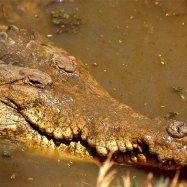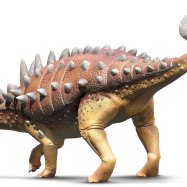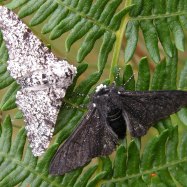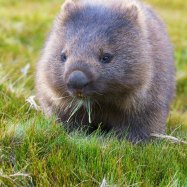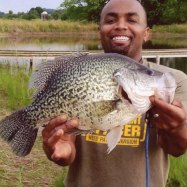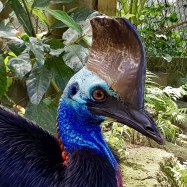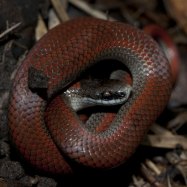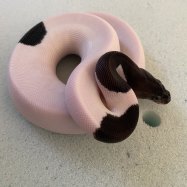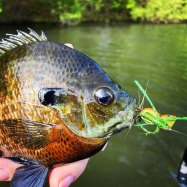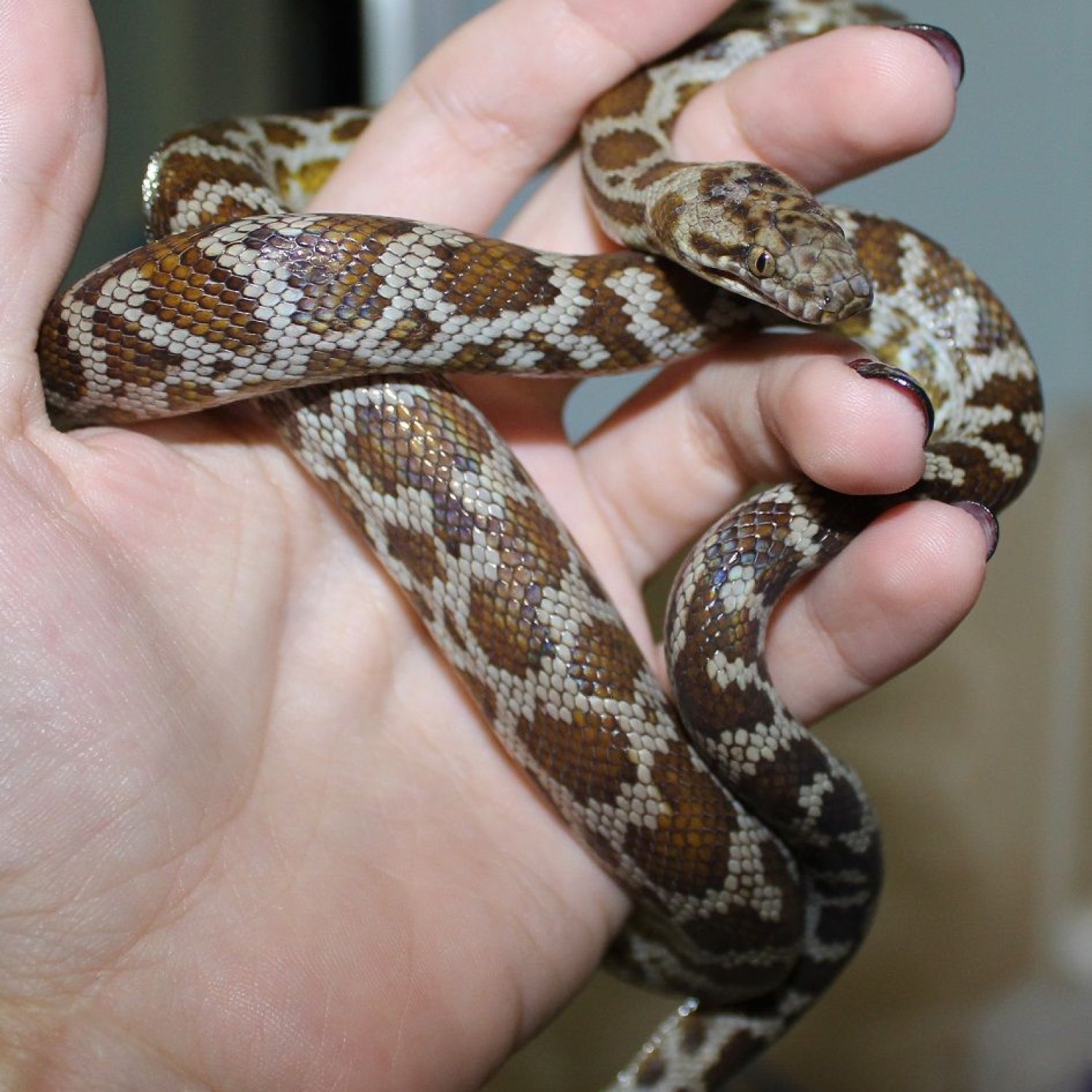
Childrens Python
1.2 to 1.5 meters
The Childrens Python, found in northern Australia and New Guinea, is a slender and elongated snake belonging to the Pythonidae family. With a length of 1.2 to 1.5 meters, this non-venomous python is a popular pet due to its small size and gentle nature. However, proper care and a spacious enclosure are necessary for its well-being. #ChildrensPython #Pythonidae #PetSnake #Australia #NewGuinea
Animal Details Summary:
Common Name: Childrens Python
Kingdom: Animalia
Habitat: Savannah grasslands, shrublands, woodlands, and semi-arid environments
The Adorable and Fascinating Childrens Python: A Guide to Everything You Need to Know
If you've ever wanted to own a snake as a pet, but have been intimidated by their size and appearance, look no further than the Childrens Python. This small, yet captivating species is perfect for first-time snake owners or those looking to expand their reptile collection.Scientifically known as Antaresia childreni, the Childrens Python is a non-venomous snake that belongs to the family Pythonidae. They are native to the savannah grasslands, shrublands, woodlands, and semi-arid environments of northern Australia and New Guinea Childrens Python. These snakes have also been found in Indonesia, specifically on the islands of Papua and Raja Ampat.
In this article, we will delve into the fascinating world of the Childrens Python, discussing everything from their physical characteristics to their habitat and diet. So, let's slither our way into the wonderful world of this adorable reptile.
Classification and Taxonomy
Kings of the Reptile World: The Classification of the Childrens Python
The Childrens Python is a part of the Animalia kingdom, and within that, the phylum Chordata. This refers to the presence of a spinal cord and internal skeleton, which is a characteristic found in all vertebrates.Next, we have the class Reptilia, which includes all reptiles such as snakes, lizards, turtles, and crocodiles. This class is characterized by having dry, scaly skin and laying eggs to reproduce.
The order Squamata encompasses all scaled reptiles, which includes snakes and lizards. Within this order, we have the family Pythonidae, which is further divided into sub-families based on genetic and physical traits Clearnose Skate.
Finally, we have the genus Antaresia, which includes four species of pythons: Childrens Python, Spotted Python, Stimson's Python, and the Pygmy Python. The Childrens Python is the most commonly kept species out of the four.
Appearance and Physical Characteristics
Small but Mighty: The Physical Traits of the Childrens Python
The Childrens Python is a small snake, with adult males reaching a length of 1.2 meters and adult females growing up to 1.5 meters. They have a slender and elongated body, which allows them to easily maneuver through their habitat and hunt prey.Their coloration is typically brown with dark markings, giving them an earthy and camouflaging appearance. These markings can range from dark patches to stripes, making each Childrens Python unique in their own way. However, captive-bred pythons can also come in a variety of different colors, such as albino or pied, due to selective breeding.
Another interesting physical trait of the Childrens Python is their heat-sensitive pits located on their lips. This allows them to detect the body heat of their prey, making them efficient hunters.
Habitat and Distribution
A Home on the Range: Where to Find the Childrens Python
As mentioned earlier, the Childrens Python is native to the savannah grasslands, shrublands, woodlands, and semi-arid environments of northern Australia and New Guinea. They are also found in Indonesia, specifically on the islands of Papua and Raja Ampat.In the wild, these snakes are primarily terrestrial, meaning they spend most of their time on the ground. However, they are also skilled climbers, and can often be found in trees or other elevated areas.
Feeding Habits
Meals on Wheels: The Carnivorous Diet of the Childrens Python
The Childrens Python is a carnivorous species, and in the wild, they primarily feed on small mammals, such as rodents and birds. They are also known to eat other reptiles, such as lizards and other snakes. In captivity, they can be fed on a diet of frozen and thawed rodents, usually once a week.Due to their small size, these snakes do not require large meals, making them an easy and cost-effective pet to care for. However, it's important to note that these snakes have a slow metabolism, so they do not require frequent feedings.
Behavior and Temperament
Don't Judge a Book by Its Cover: The Surprising Personality of the Childrens Python
Many people assume that because snakes are cold-blooded reptiles, they do not possess personalities like other pets. However, the Childrens Python is known for its calm and docile demeanor, making them a great pet for those who are afraid of snakes.They are also known for their relatively low activity levels, often spending most of their time coiled up in a hiding spot. This makes them an ideal pet for those who have limited space or time for a high-energy pet.
Country of Origin and Availability
From Down Under to Your Home: The Childrens Python's Country of Origin
The Childrens Python is native to Australia and Papua New Guinea, making them a relatively easy species to find and acquire in the pet trade. They are also commonly bred in captivity, making them easily accessible for those looking to own one.However, it's important to note that in some places, keeping a Childrens Python as a pet may be regulated or illegal due to their natural habitat being in certain countries. Therefore, it's important to check with your local laws and regulations before purchasing one as a pet.
Caring for a Childrens Python
Homes and Health: How to Care for Your Childrens Python
Like any pet, the Childrens Python requires proper care and maintenance for a happy and healthy life. Here are some important things to keep in mind when caring for this fascinating reptile.Habitat: In captivity, Childrens Pythons require a tank with enough space for them to move around and a hiding spot where they can feel secure. The enclosure should also have a heat source, such as a heat mat or heat lamp, to help regulate their body temperature.
Temperature and Humidity: These snakes prefer warm and humid environments, similar to their natural habitat. Their enclosure should have a warm side with temperatures between 85-90°F and a cool side with temperatures between 75-80°F. The humidity levels should also be kept between 50-60%, which can be achieved with a water bowl and regular misting of the enclosure.
Feeding: As mentioned earlier, Childrens Pythons typically eat a diet of frozen and thawed rodents. It's important to note that feeding live prey can be dangerous for both the snake and the prey, as the prey can potentially injure the snake.
Handling: While Childrens Pythons are generally docile and easy to handle, it's important to handle them with care and respect. Always wash your hands before and after handling them, and never handle them if you are feeling ill or have recently handled other reptiles.
Potential Health Issues
Common Health Concerns for Childrens Pythons
Childrens Pythons are generally healthy and hardy reptiles, and with proper care, they can live up to 20 years in captivity. However, there are some health issues to be aware of and look out for, including:- Respiratory Infections: These can be caused by inadequate temperature and humidity levels or a dirty environment.
- Parasites: Just like any other animal, Childrens Pythons can also get parasites, which can lead to weight loss and other health issues.
- Mouth Rot: This is a bacterial infection that affects the mouth, often caused by injuries to the mouth or unclean living conditions.
Conclusion
An Endless Source of Curiosity: Why You Should Consider a Childrens Python as a Pet
In conclusion, the Childrens Python is a fascinating and charming species of snake that makes for an excellent pet for beginners and experienced reptile owners alike. With their calm and docile demeanor, low maintenance needs, and easy accessibility, they are a great option for anyone looking to add a unique and interesting pet to their family.From their classification and physical characteristics to their behavior and habitat, we hope this guide has given you a comprehensive understanding of the wonderful world of the Childrens Python. Whether you're a seasoned reptile owner or a curious beginner, the Childrens Python is sure to capture your heart and bring endless fascination to your life.

Childrens Python
Animal Details Childrens Python - Scientific Name: Antaresia childreni
- Category: Animals C
- Scientific Name: Antaresia childreni
- Common Name: Childrens Python
- Kingdom: Animalia
- Phylum: Chordata
- Class: Reptilia
- Order: Squamata
- Family: Pythonidae
- Habitat: Savannah grasslands, shrublands, woodlands, and semi-arid environments
- Feeding Method: Carnivorous
- Geographical Distribution: Northern Australia and New Guinea
- Country of Origin: Australia and Papua New Guinea
- Location: Northern Australia and New Guinea
- Animal Coloration: Typically brown with dark patterns
- Body Shape: Slender and elongated
- Length: 1.2 to 1.5 meters
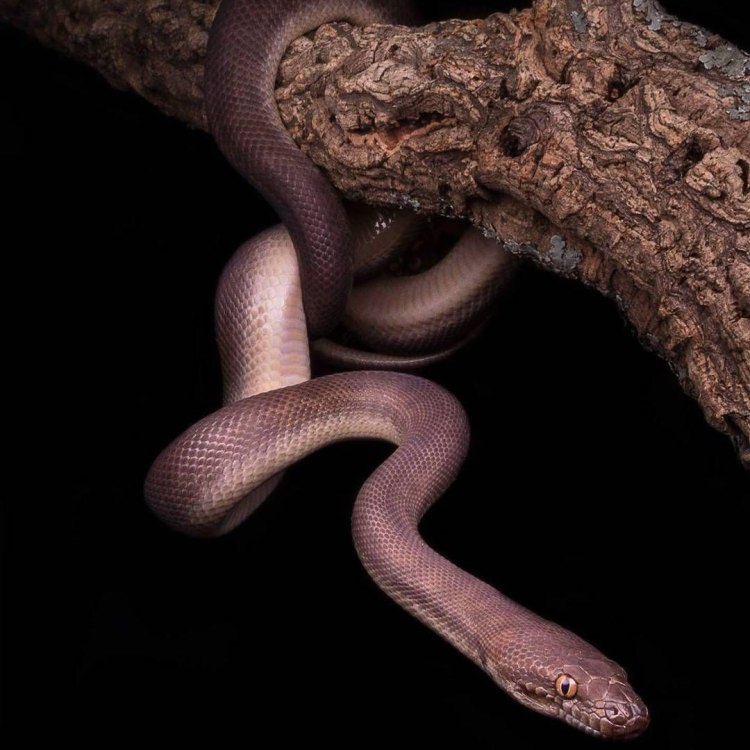
Childrens Python
- Adult Size: 1.2 to 1.5 meters
- Average Lifespan: 15 to 20 years
- Reproduction: Oviparous (lays eggs)
- Reproductive Behavior: Mating occurs during the rainy season
- Sound or Call: Not known for vocalizations
- Migration Pattern: Non-migratory
- Social Groups: Solitary, but may form aggregations during cooler months
- Behavior: Nocturnal and primarily terrestrial
- Threats: Habitat loss and collection for the pet trade
- Conservation Status: Not listed as endangered
- Impact on Ecosystem: Help control rodent populations
- Human Use: Popular as pets due to their small size and docile nature
- Distinctive Features: Small size, narrow head, and dark patterns on a light background
- Interesting Facts: They are not venomous and rely on constriction to subdue their prey
- Predator: Large birds, reptiles, and mammals
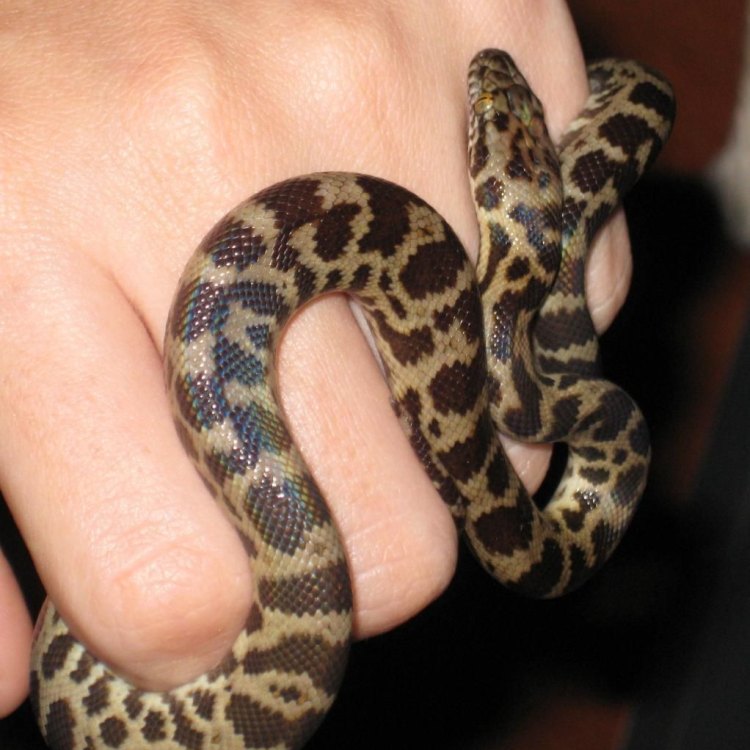
Antaresia childreni
The Fascinating World of Childrens Pythons: A Docile and Vital Species
Growing up, many of us were enamored by the idea of owning a pet snake, fascinated by the way it slithers and the cool factor it brings to our lives. However, not all snakes make for great pets. Some are venomous, while others grow to massive sizes that could make any pet owner feel intimidated. But have you ever heard of Childrens Pythons? This python species boasts unique features that make them an ideal pet for snake enthusiasts PeaceOfAnimals.Com. In this article, we will delve into the world of Childrens Pythons, from their distinctive features to their role in our ecosystem.The Basics: Size, Lifespan, and Reproduction
Childrens Pythons, also known as small-blotched pythons, are a species of python native to Australia. As their name suggests, they are relatively small in size, making them one of the few python species that can be kept as pets. On average, they can grow to a length of 1.2 to 1.5 meters, making them perfect for those who prefer snakes that are easy to handle. They also have an average lifespan of 15 to 20 years, making them a long-term commitment for any pet owner.When it comes to reproduction, Childrens Pythons are oviparous, meaning they lay eggs. Females typically lay a clutch of 4-8 eggs during the breeding season, which happens during the rainy season in Australia Cubera Snapper. The eggs are incubated for 2-3 months, after which the hatchlings emerge, fully independent and ready to take on the world.
The Love Life of Childrens Pythons
Mating in Childrens Pythons usually occurs during the rainy season, which is typically between December and March. It is during this time that males may fight for the attention of a female, often resulting in impressive wrestling matches.Once the female chooses her mate, copulation can last for several hours, with the male gently biting the female's neck to prevent her from moving. And just like any romantic love story, the female will lay her eggs, and the male will leave to resume his solitary lifestyle.
A Quiet Species: Sound, Migration, and Social Behavior
One characteristic of Childrens Pythons that sets them apart from other snakes is their lack of vocalizations. Unlike other species that hiss or rattle, Childrens Pythons are quiet creatures that rely on stealth to camouflage themselves and avoid predators.In terms of migration, Childrens Pythons are known to be non-migratory, meaning they do not travel long distances in search of food or shelter. They prefer to remain in their territories and only move to bask in the sun or find a mate during the breeding season.
While Childrens Pythons are generally solitary creatures, they may form aggregations during cooler months, sharing basking sites and dens. This behavior also makes them popular pets, as they are not entirely reliant on human interaction.
Nocturnal and Terrestrial: A Peek into Their Behavior
Childrens Pythons are primarily nocturnal, meaning they are most active at night. During the day, they can be found hiding in underground burrows, rocky crevices, or dense vegetation. This behavior not only helps them avoid the scorching sun but also protects them from potential predators.Being a terrestrial species, Childrens Pythons spend most of their time on land, where they hunt for prey, bask in the sun, and find shelter. They are excellent climbers but are rarely seen on trees, unless they are looking to bask in the sun.
Threats, Conservation Status, and Role in Ecosystem
The biggest threat to Childrens Pythons is habitat loss. Like many other species, they suffer from the destruction and fragmentation of their natural habitat, leading to a decline in their population. They are also collected for the pet trade, further reducing their numbers in the wild.Despite these threats, Childrens Pythons are not listed as endangered, thanks to their wide distribution across Australia and their ability to adapt to a variety of habitats. However, their role in the ecosystem cannot be overlooked.
Childrens Pythons play a vital role in controlling rodent populations in their habitats. As nocturnal hunters, they feed on small mammals, such as rats and mice, keeping their numbers in check. This makes them an essential part of the ecosystem and highlights the need for their conservation.
A Popular Pet Choice: Human Use and Interesting Facts
Childrens Pythons have gained popularity as pets due to their small size and docile nature. Unlike other pythons, they are relatively easy to handle and do not require extensive care. They are also not known to be aggressive, making them an ideal option for first-time snake owners.One interesting fact about Childrens Pythons is that, unlike other pythons, they are not venomous. Instead, they rely on constriction to subdue their prey, squeezing them tightly until they suffocate. They also have a unique feeding behavior, known as "abdominal eating," where they swallow their prey headfirst and use their rearward-pointed teeth to push it further down their throat.
Predators of Childrens Pythons
Despite their non-venomous nature, Childrens Pythons have a few predators in their natural habitat. Large birds, including birds of prey, such as eagles and owls, are known to feed on young pythons. Reptiles, such as goannas and other snakes, also pose a threat to Childrens Pythons. Even mammals, like dingoes and feral cats, are known to prey on small and juvenile pythons.In conclusion, Childrens Pythons may not be as popular as their larger and more glamorous python cousins, but they certainly have unique qualities that make them stand out. From their small size and docile nature to their role in controlling rodent populations and their non-existent vocalizations, these pythons are not to be overlooked. They are a vital species in our ecosystem and deserve our efforts in protecting and conserving them for future generations. So, the next time you come across a Childrens Python, instead of being afraid, take a moment to appreciate these fascinating and essential creatures.
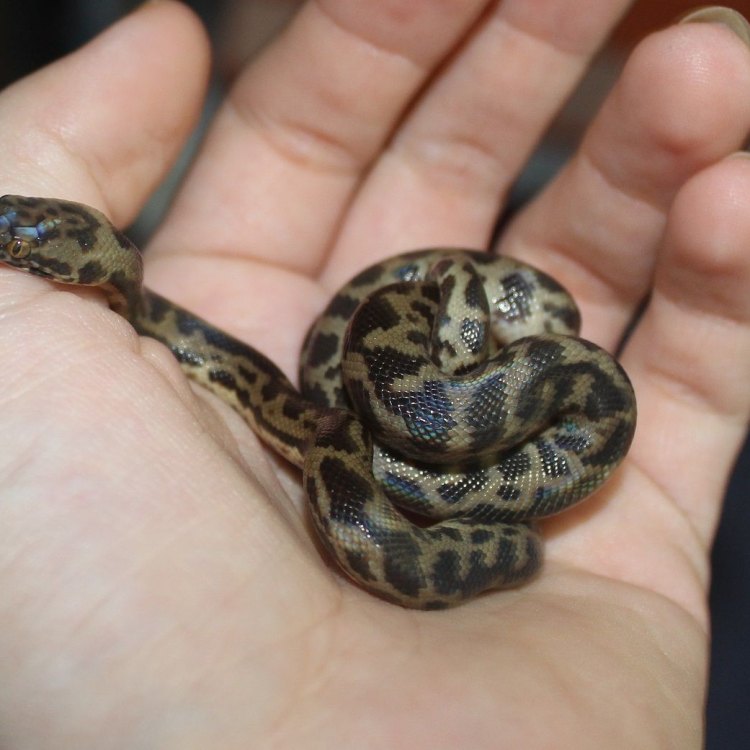
The Adorable and Fascinating Childrens Python: A Guide to Everything You Need to Know
Disclaimer: The content provided is for informational purposes only. We cannot guarantee the accuracy of the information on this page 100%. All information provided here may change without prior notice.


